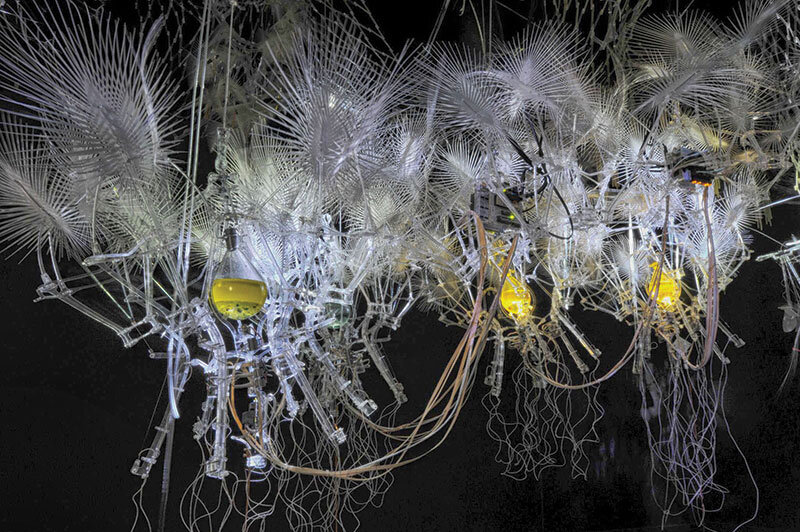Ce e o țesătură? Concepte și abordări în designul textil modern | What’s a Fabric? Concepts and Approaches to Modern Textile Design

| Dacă e să vorbim de textile, atunci țesătura este prin excelență expresia textilă cea mai concretă. Orice produs țesut sau tricotat este o țesătură, atât în sens fizic, cât și în sens metaforic1. Cum, în același timp, termenul de țesătură este apropiat etimologic, în unele limbi, și de noțiunea de „loc de producție”, atunci țesătura poate fi considerată expresia actului de a face/ produce în general. Tocmai de aceea, țesăturile sunt la jumătatea drumului între materie și obiecte fabricate, formă tranzitorie în vederea producerii de obiecte textile.Textilele sunt una din cele mai vechi tehnologii umane, însă ele pot fi considerate în multe privințe și în avangarda formelor de producție moderne. Revoluția industrială a început cu îmbunătățirea mijloacelor de producție textile: mașinile de tors, suveica, pentru a fi urmate de invenția războiului de țesut Jacquard. În același timp, actualele sisteme digitale sunt îndatorate sistemului 1-0 al războiului de țesut.
Textul de față face o trecere în revistă a modurilor în care țesătura a fost conceptualizată în epoca modernă din punctul de vedere al designerilor. Luând în considerare câteva figuri referențiale ale designului textil modern, putem distinge trei concepții diferite: cea a țesăturii-suprafață (obiect de decorație, așa cum a fost ea definită de William Morris), țesătura-construcție (așa cum a fost ea apărată de Anni Albers), țesătura-membrană sau interfață (conform propunerilor recente făcute de Joanna Berzowska sau Philip Beesley). În afară de relevanța istorică, aceste concepte depun mărturie despre evoluțiile tehnice și științifice și, nu în cele din urmă, de schimbările paradigmatice care au avut loc în felul în care concepem materia. |
| Citiți textul integral în numărul 3 / 2015 al Revistei Arhitectura |
| Note:
1 Vezi Oxford Dictionary: http://oxforddictionaries.com/. |
| When discussing textiles, fabric is by far the most tangible expression. All woven or knit products are fabric, both in a physical and metaphorical sense1. Also, if we consider that fabric means a place of production (see fabriqué in French), then it is the expression of the act of making in general. Therefore, fabrics are halfway between matter and fabricated objects, a transitory form in view of producing textile objects.Textiles are one of the oldest human technology and they can also be considered in many respects avant-gardes of modern forms of production. The industrial revolution started with the improvements of textile production: spinning jenny and the flying shuttle, to be followed by the invention of Jacquard weaving machines. At the same time, our present day computation system is indebted to the 1-0 weaving system.
The present text is looking to the ways in which the fabrics have been conceptualized in modern times by relying on designers’ point of view. Taking into account some referential figures of modern textiles design, we have distinguished between three different conceptions: the fabric as surface (and object of decoration, as defined by William Morris), the fabric as construction (as defended by Anni Albers), the fabric as membrane or interface (as proposed more recently by Joanna Berzowska or Philip Beesley). Besides the historical relevance, these concepts testify of the technical and scientific advancements and last, but not least, of the paradigmatic changes that took place on the way we conceive the matter. |
| Read the full text in the print magazine |
| Notes:
1 See Oxford Dictionary: http://oxforddictionaries.com/. |